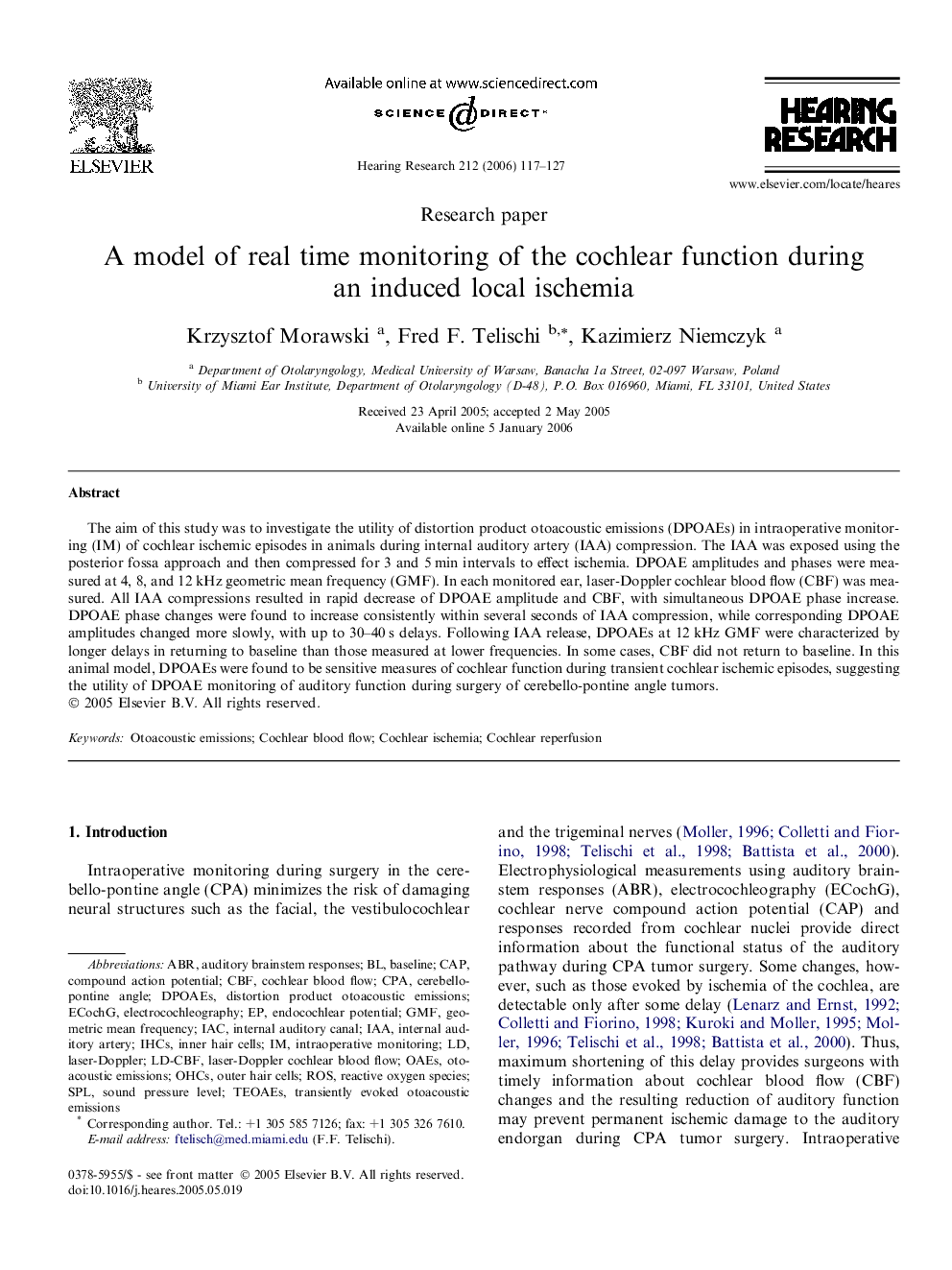| Article ID | Journal | Published Year | Pages | File Type |
|---|---|---|---|---|
| 4356464 | Hearing Research | 2006 | 11 Pages |
Abstract
The aim of this study was to investigate the utility of distortion product otoacoustic emissions (DPOAEs) in intraoperative monitoring (IM) of cochlear ischemic episodes in animals during internal auditory artery (IAA) compression. The IAA was exposed using the posterior fossa approach and then compressed for 3 and 5Â min intervals to effect ischemia. DPOAE amplitudes and phases were measured at 4, 8, and 12 kHz geometric mean frequency (GMF). In each monitored ear, laser-Doppler cochlear blood flow (CBF) was measured. All IAA compressions resulted in rapid decrease of DPOAE amplitude and CBF, with simultaneous DPOAE phase increase. DPOAE phase changes were found to increase consistently within several seconds of IAA compression, while corresponding DPOAE amplitudes changed more slowly, with up to 30-40Â s delays. Following IAA release, DPOAEs at 12Â kHz GMF were characterized by longer delays in returning to baseline than those measured at lower frequencies. In some cases, CBF did not return to baseline. In this animal model, DPOAEs were found to be sensitive measures of cochlear function during transient cochlear ischemic episodes, suggesting the utility of DPOAE monitoring of auditory function during surgery of cerebello-pontine angle tumors.
Keywords
Internal auditory arteryCerebello-pontine angleGMFElectrocochleographyIHCsCPAECochGCBFABRIACIAADPOAEsDistortion product otoacoustic emissionsCochlear blood flowbaselineinner hair cellsLaser-DopplerIntraoperative monitoringauditory brainstem responsesendocochlear potentialCompound Action PotentialInternal auditory canalCaP
Related Topics
Life Sciences
Neuroscience
Sensory Systems
Authors
Krzysztof Morawski, Fred F. Telischi, Kazimierz Niemczyk,
